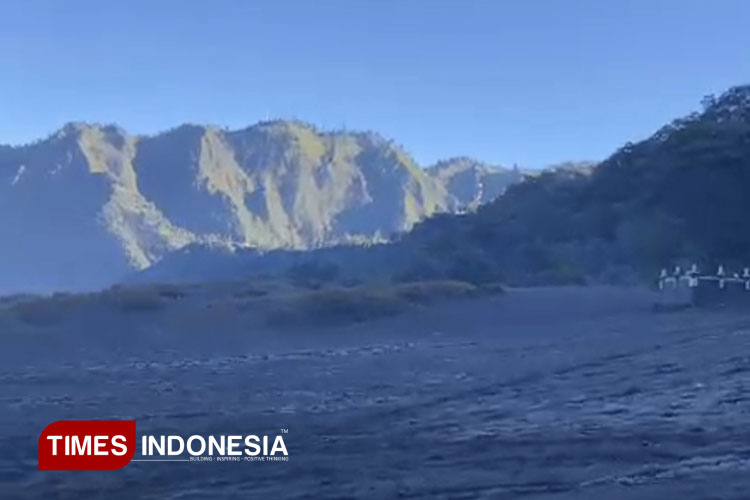
TIMESINDONESIA, MALANG – Mount Bromo has once again become a magical destination as the phenomenon known as embun upas returns, blanketing its landscape in a frosty white layer that resembles snow. Tourists are flocking to the national park, eager to witness this rare tropical occurrence that gives the impression of being in a snow-covered country—right in the heart of East Java, Indonesia.
Embun upas, which translates to “poison dew,” is not poisonous at all. It refers to a thin layer of ice crystals that forms on the ground, grass, and plants during extremely low morning temperatures.
Advertisement
This natural spectacle typically appears during the dry season, especially between July and August, when the sky is clear and temperatures at dawn can drop to as low as 2–5°C. In several locations around Bromo, such as the Sea of Sand, Ranu Regulo, Ranupani, Mentigen, and Seruni Point, the ice gives the illusion of snowfall, attracting both amateur photographers and seasoned travelers.
The freezing conditions, although brief, create breathtaking scenery. Visitors are advised to arrive as early as 4:30 a.m. to witness the icy layer at its thickest—before it melts under the morning sun around 10 a.m.
Many tourists, like Sandi from Malang, intentionally travel at dawn to capture photos of what he describes as a sandy desert turned white like snow. The surreal sight of frost glimmering on volcanic sand has led many to refer to it as tropical snow.
Despite its beauty, the phenomenon is not without its challenges. The low temperatures can cause discomfort or even hypothermia if visitors are unprepared. Authorities and park officials advise wearing thick jackets, gloves, hats, and proper footwear to stay warm.
Additionally, tourists are encouraged not to disturb the frozen vegetation and to be mindful of their environmental impact, as the park’s ecosystem is highly sensitive during these extreme weather conditions.
Mount Bromo's popularity during the embun upas season has significantly boosted tourism. In 2024 alone, the Bromo Tengger Semeru National Park recorded over 485,000 visitors, generating more than Rp 21 billion in revenue.
However, this surge in interest brings environmental concerns, including increased litter and potential harm to the fragile savanna landscape. Authorities urge all visitors to follow eco-friendly practices and help preserve the park’s natural beauty.
Ultimately, embun upas is a captivating reminder of Indonesia’s natural wonders. It transforms the already majestic Mount Bromo into a winter-like dreamscape, offering a unique and Instagram-worthy experience unlike anywhere else in the tropics. (*)
**) Ikuti berita terbaru TIMES Indonesia di Google News klik link ini dan jangan lupa di follow.
| Editor | : Khodijah Siti |
| Publisher | : Ahmad Rizki Mubarok |

